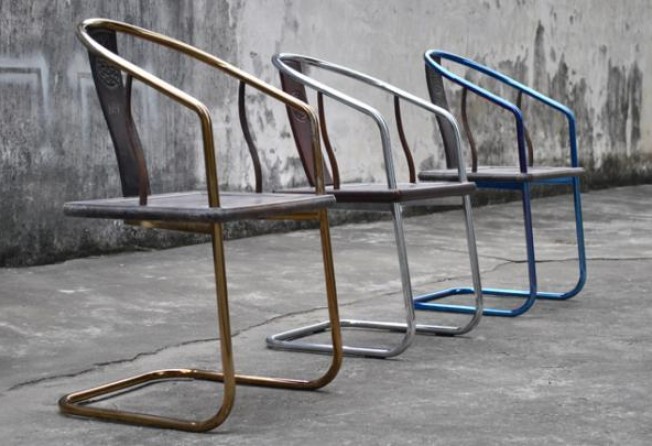
New furniture collection mixes cultures
A furniture collection brings together iconic design elements from East and West to create a new symmetry, writes Annie Gotterson


Comprising 50 pieces, the collection consists of antique wooden Chinese seats, benches and tables with legs or arms made with tubular steel structures.
Recruited by the Schoeni Gallery for the project, Meda is no stranger to the world of design. After studying industrial design at the Istituto Europeo di Design in Milan, he worked at London- based Sebastian Bergne and Ross Lovegrove design studios. In 2008, he returned to Milan to work with his father at his eponymous Alberto Meda studio, whose clients include Alessi, Vitra and Kartell.
For Orme Cinesi, his brief was to create a design reminiscent of the past, but belonging in the present. The collection’s Italian name, Orme Cinesi, means Chinese footprints.
Describing the project as a “mix of two designs and languages”, Meda says he had to think in both cultures.
“I couldn’t use just one approach, or be too aggressive and take too much of the Chinese style away.”
He says they decided to remove the legs and some of the arm rests to give the heavy wooden pieces a sense of lightness. It also allowed them to keep the decorative and most recognisable elements of the 1,000-year-old Chinese style intact.
Similarly, the minimal steel tubes were chosen as symbols of contemporary European design. “We used the tube because it is the most iconic element of the Bauhaus design and historical movement in Europe,” says Meda.
A time that saw the elaborate, decorative elements of the baroque, and earlier periods’ furniture stripped away in favour of clean, modern lines and forms derived from function, rather than style.
After coming up with the design and building a prototype in Italy, Meda flew to China where he worked with local craftsmen to put the collection together by hand.
“It was interesting to see how the craftsmen worked and to discover ancient skills. For me it was something new,” he says.
The Orme Cinesi collection is available exclusively at Lane Crawford Home.